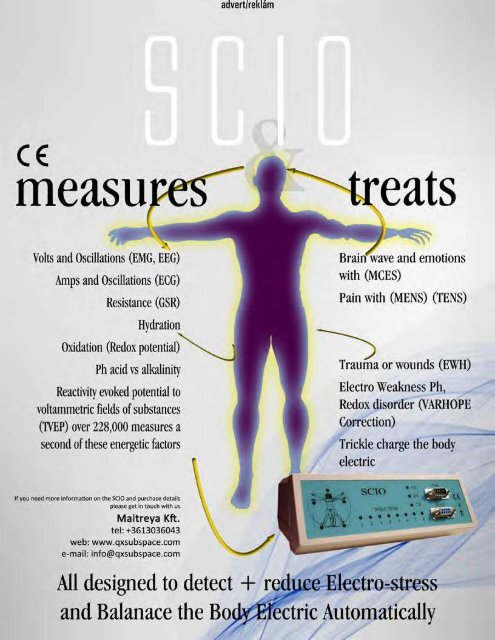Create successful ePaper yourself
Turn your PDF publications into a flip-book with our unique Google optimized e-Paper software.
Never Have a Heart Attack<br />
3 new surprising ways to help predict-and prevent-a heart attack.<br />
Your doctor can order a host of complex tests to gauge the health of your heart, but I’d like to<br />
tell you about three new methods of predicting heart disease that are surprisingly simple and<br />
effective. One can be done with your eyes closed-literally. Another can be ordered the next time<br />
you have a blood test, and the third involves taking the temperature of your finger. Here’s a<br />
rundown of how each one works:<br />
1. The sleep test<br />
Answer this question: Do you feel drowsy during the day? If so, you may be harming your heart.<br />
Every extra hour of sleep middle-age adults can add to their nightly average reduces their risk<br />
of coronary artery calcification by 33 percent, according to a study reported in the Journal of<br />
the American Medical Association. When you’re even a little sleep deprived, your body releases<br />
stress hormones that constrict arteries and cause inflammation. If you routinely wake up feeling<br />
tired or need an afternoon nap, then you’re probably sleep deprived. Try either changing your<br />
sleep habits (darker room, TV off, earplugs) or going to bed 30 minutes earlier until symptoms<br />
disappear. If your spouse complains about your snoring or if you often wake up with a headache,<br />
get checked for sleep apnea disorder.<br />
2. The vitamin D test<br />
Low levels of vitamin D, found in nearly 80 percent of U.S. adults, can cause a rise in blood pressure<br />
and increased arterial inflammation. Fortunately, it’s easy to test for and remedy any deficiency.<br />
Ask your doctor to order a vitamin-D analysis as part of your next blood test. Optimal levels are<br />
30 to 40 ng/mL, but some doctors contend 50-plus ng/mL is even better. If yours is low, get 10 to<br />
15 more minutes of sunlight per day (without sunblock), eat more vitamin D-rich foods (salmon,<br />
tuna, fortified orange juice), or take a D supplement (as recommended by your doctor). It’s one of<br />
the simplest things you can do to protect your heart.<br />
Follow Dr. Agatston’s 3-Point Plan to protect your heart’s health.<br />
3. The finger test<br />
Lining all your blood vessels-even those in your index finger-is a single layer of cells, called the<br />
endothelium, that produce chemicals that affect the vessels’ function, causing dilation, constriction,<br />
clotting, etc. Negative changes in the endothelium occur years before any other measurable signs<br />
of heart trouble appear, so researchers have believed that if the health of the endothelium could<br />
be tested, we just might lick heart disease and stroke.<br />
Now we have that test. The one I use, called Vendys, involves attaching a fingertip-temperature<br />
detector to your index finger and wrapping a blood-pressure cuff around your arm. As the cuff<br />
is inflated, blood flow to the hand decreases and finger temperature drops. After five minutes,<br />
the cuff is deflated and blood flow returns. The faster and more completely finger temperature<br />
rebounds, the healthier the endothelium.<br />
The great thing about this test is that I can not only assess your vascular health but also partially<br />
40 41

















